TRIBUTE TO YURI KOSOBUKIN
by Francisco PUNAL SUAREZ

The news of the death of Ukrainian multiawarded cartoonist Yuri Kosobukin saddened all who appreciate the humor, honesty critical and artistic qualities. Now Volpe Stessens Cultural Foundation, Museum of Graphic Humor Diogenes Taborda of Buenos Aires, Argentina, as part of International Museum Day, opens at its headquarters, on 18 May, an exhibition in his honor.
His style was unmistakable, and his name is written in the golden pages of the cartoon world. His intensive work and brilliant talent allowed thousands of drawings published in magazines and newspapers, in his many years of work. His drawings were exhibited worldwide. International competitions always longed for his caricatures and the judges rewarded him again and again. People admired and understood his work, despite cultural differences, by the universality of it.
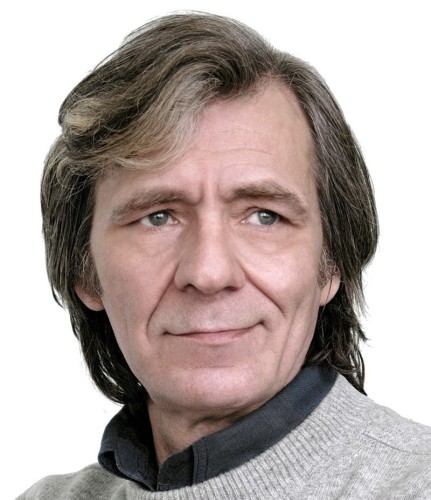 Yuri KOSOBUKIN
Yuri KOSOBUKIN
Yuri Kosobukin, Ukraine, born in 1950, published his first cartoon in the press in 1976. He knew that to work and create daily, his work was known and acclaimed in numerous foreign countries, and that too, in addressing the perennial human feelings and contradictions, had secured an audience that followed him, and that the passage of time did not remained the slightest interest in his drawings, often full of melancholy, and an ironic and critical vision.
No subject escaped his eyes, all matter in his focus on human relationships and problems of the universe.
His artistic knife penetrated where social situations are scenes of everyday dramas of humanity, and where people of all social classes, shows, in many cases, their ambitions and desires, sometimes repulsive. His cartoons are both nice and sad.
For some, his drawings are “graphically written short stories” in a literal sense of the word.
His cartoons are sequences of a film that is life.
When Yuri Kosobukin made his first cartoons he did not have an artistic career. He had studied aeronautical engineering in Kharkiv, and worked at the Center Antonov Aircraft Design in Kiev. He was 26 years old. Fortunately for those who appreciate art, humor and caricature, from the time of rupture and change, talent of Yuri Kosobukin not stopped creating images that make us look at ourselves in the mirror of life.
*****
DRAWINGS BY YURI KOSOBUKIN:


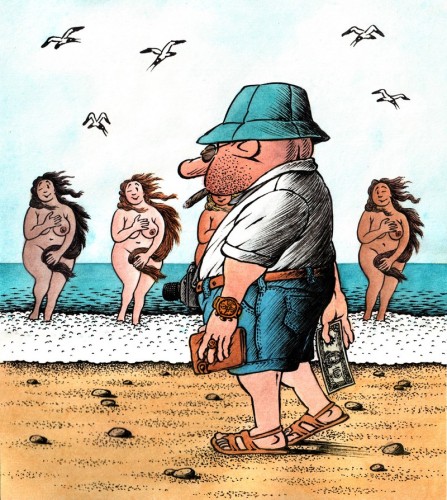
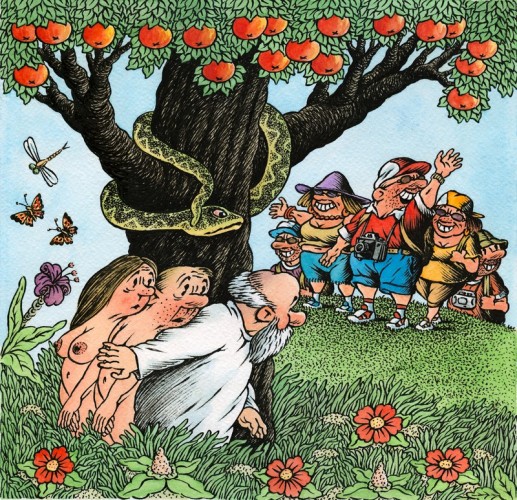
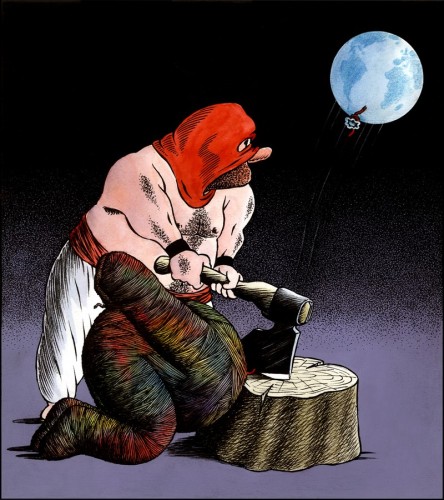
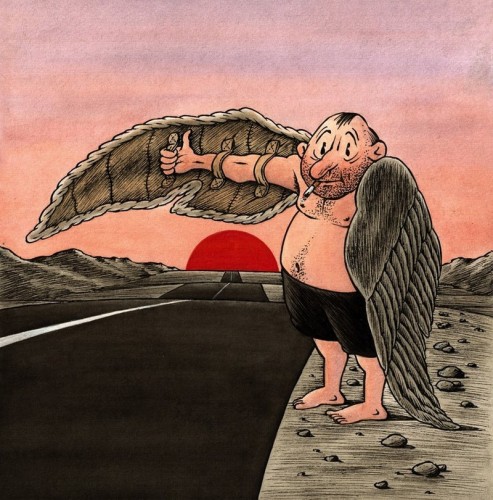
Artworks by Yuri KOSOBUKIN
ORIGINAL SPANISH TEXT:
HOMENAJE A YURI KOSOBUKIN
Por Francisco Puñal Suárez
La noticia del fallecimiento del multipremiado caricaturista ucraniano Yurij Kosobukin entristeció a todos los que apreciamos el humor gráfico, su honestidad crítica y sus cualidades artísticas. Ahora la Fundación Cultural Volpe Stessens, Museo de Humor Grafico Diógenes Taborda de Buenos Aires, Argentina, en el marco del Día Internacional de los Museos, inaugura en su sede, el próximo 18 de mayo, una exposición en su homenaje.
Su estilo era inconfundible, y su nombre está escrito en las páginas de oro de la caricatura mundial. Su trabajo intensivo y su brillante talento le permitieron publicar miles de dibujos en revistas y periódicos, en sus muchos años de trabajo. Sus dibujos se exhibieron en todo el mundo. Los concursos internacionales siempre añoraban sus caricaturas y los jurados lo premiaron una y otra vez. La gente admiraba y comprendía su obra, a pesar de las diferencias culturales, por el carácter universal de la misma.
Yurij Kosobukin, de Ucrania, nacido en 1950, publicó su primera caricatura en la prensa en 1976. Él sabía que al trabajar y crear diariamente, su obra era conocida y aplaudida en numerosos países extranjeros, y que también, al abordar los eternos sentimientos humanos y sus contradicciones, tenía asegurado un público que lo seguía, y que el paso del tiempo no le restaba interés en lo más mínimo a sus dibujos, muchas veces llenos de melancolía, y con una visión irónica y crítica.
Ningún tema escapó a su mirada, todo tiene importancia en su enfoque sobre las relaciones humanas y los problemas del universo.
Su bisturí artístico penetró allí donde las situaciones sociales son escenarios de los dramas cotidianos de la humanidad, y donde las personas, de todas las clases sociales, muestran, en muchas ocasiones, sus ambiciones y deseos, en algunos casos repulsivos. Sus caricaturas son al mismo tiempo simpáticas y tristes.
Para algunos, sus dibujos son “pequeñas historias escritas gráficamente”, en un sentido literal de la palabra.
Sus caricaturas son secuencias de una película que es la vida.
Cuando Yurij Kosobukin realizó sus primeras caricaturas no tenía una trayectoria artística. Había estudiado ingeniería aeronáutica en Kharkiv, y trabajaba en el Centro Antonov de Diseño de Aviones , en Kiev. Tenia 26 años. Para suerte de los que apreciamos el arte, el humor y la caricatura, a partir de ese momento de ruptura y de cambio, el talento de Yurij Kosobukin no dejó de crear imágenes que nos hacen mirarnos en el espejo de la vida.
Francisco PUNAL SUAREZ
(author is a renowned Spanish journalist and photographer)
* see also information about the exhibition in Buenos Aires, Argentina – click here
